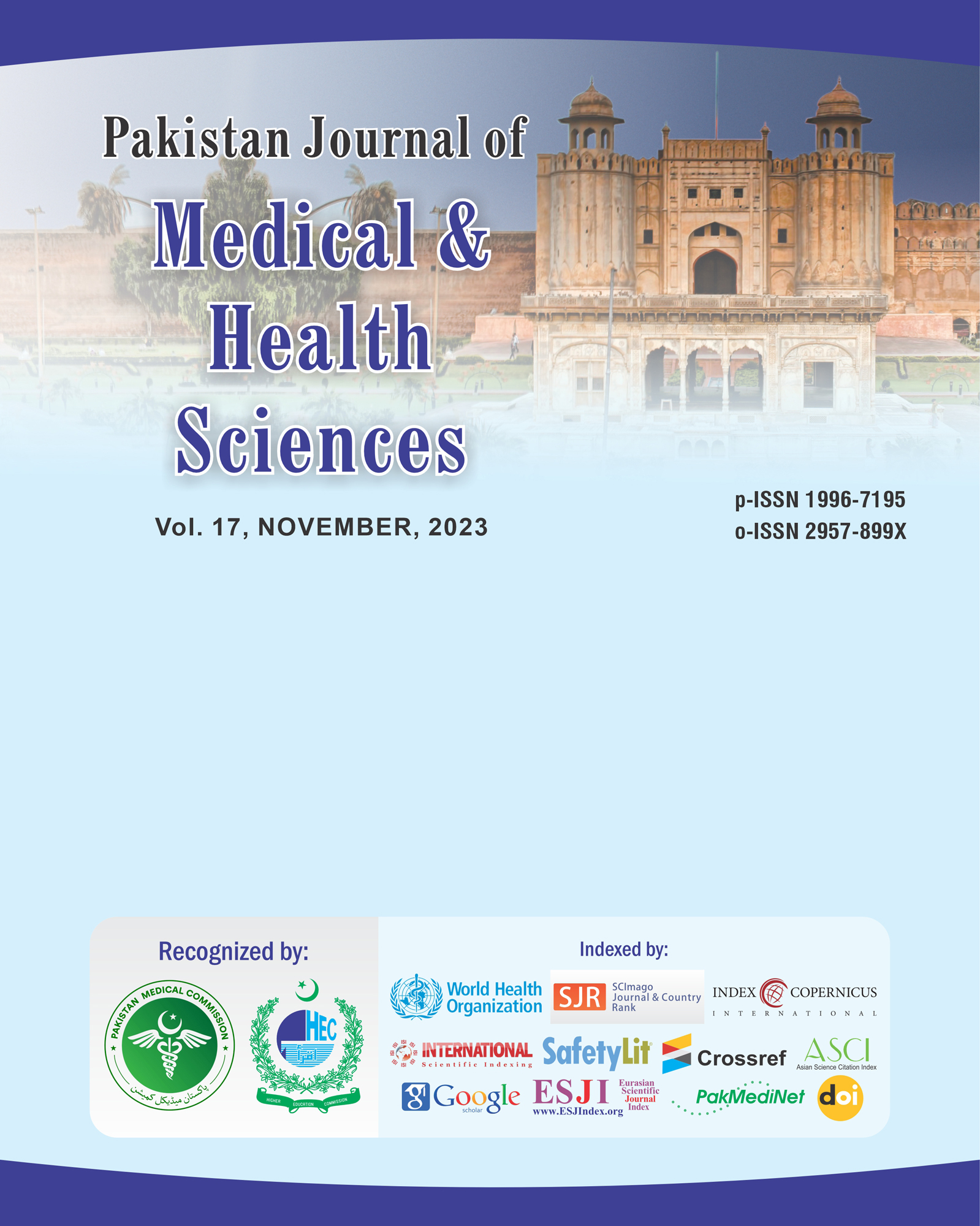Assessment of the Functional Outcomes Associated with Tension Band Wire (TBW) Treatment for Patella Fractures at Bolan Medical and Teaching Hospital, Quetta
DOI:
https://doi.org/10.53350/pjmhs20231711203Abstract
Introduction: Patella fractures represent approximately 1% of all types of fractures and are most frequently seen in individuals aged 20 to 50. Various surgical fixation methods for patellar fractures have been documented, including the use of tension bands, plates and screws, cerclage wire, and external fixation, among others. The tension band wire (TBW) technique is particularly prevalent due to its ability to provide stable fixation and facilitate early mobility.
Objective: To assess the effectiveness of tension band wiring (TBW) in the treatment of patellar fractures.
Setting and Study Duration: This Descriptive study was conducted at Bolan Medical and teaching hospital, Quetta, Study extended from 15th December 2022 to 15th June 2023.
Material and Method: After approval by the hospital's ethical board, a total of 142 patients, comprising both males and females, were enrolled in the study during an emergency situation. Informed consent was obtained from all participants. A demographic profile, including age, gender, and place of residence, was recorded. All cases that underwent total patellar replacement were evaluated based on established inclusion and exclusion criteria. Patients were assessed at two weeks, four weeks, and twelve weeks post-surgery. The functional outcomes were evaluated at the twelve-week mark using the Good fellow grading system for motion.
Results: In this study a total of 142 patients who underwent TBW patella were studied. The mean age of the study population was 39.1±16.52 years. Majority if the assessed cases were males that is 81.7% (116 cases). Functional outcome was categorized as per the Good Fellows grading of range of motion. Highest number of cases i-e 60 (42.3%) showed good results. Second commonest category was excellent: 31% (44 cases) demonstrated good results. Whereas 21.1%, 4.2% and 1.4% showed fair, satisfactory and poor results, respectively.
Conclusion: Thus, it is evident that the tension band wiring of patella after anatomic reduction is associated with good to excellent functional recovery. Additionally, incorporating cerclage enhances the strength of the construct, contributing to the attainment of these positive outcomes.
Keywords: Patella fractures, tension band wiring, patella cerclage, knee extension mechanism.
Downloads
How to Cite
Issue
Section
License
Copyright (c) 2023 Aman Ullah Khan, Abdul Hameed, Abdul Khaliq, Attiq Ur Rehman, Irfan Adil, Abdul Ghafoor

This work is licensed under a Creative Commons Attribution 4.0 International License.


